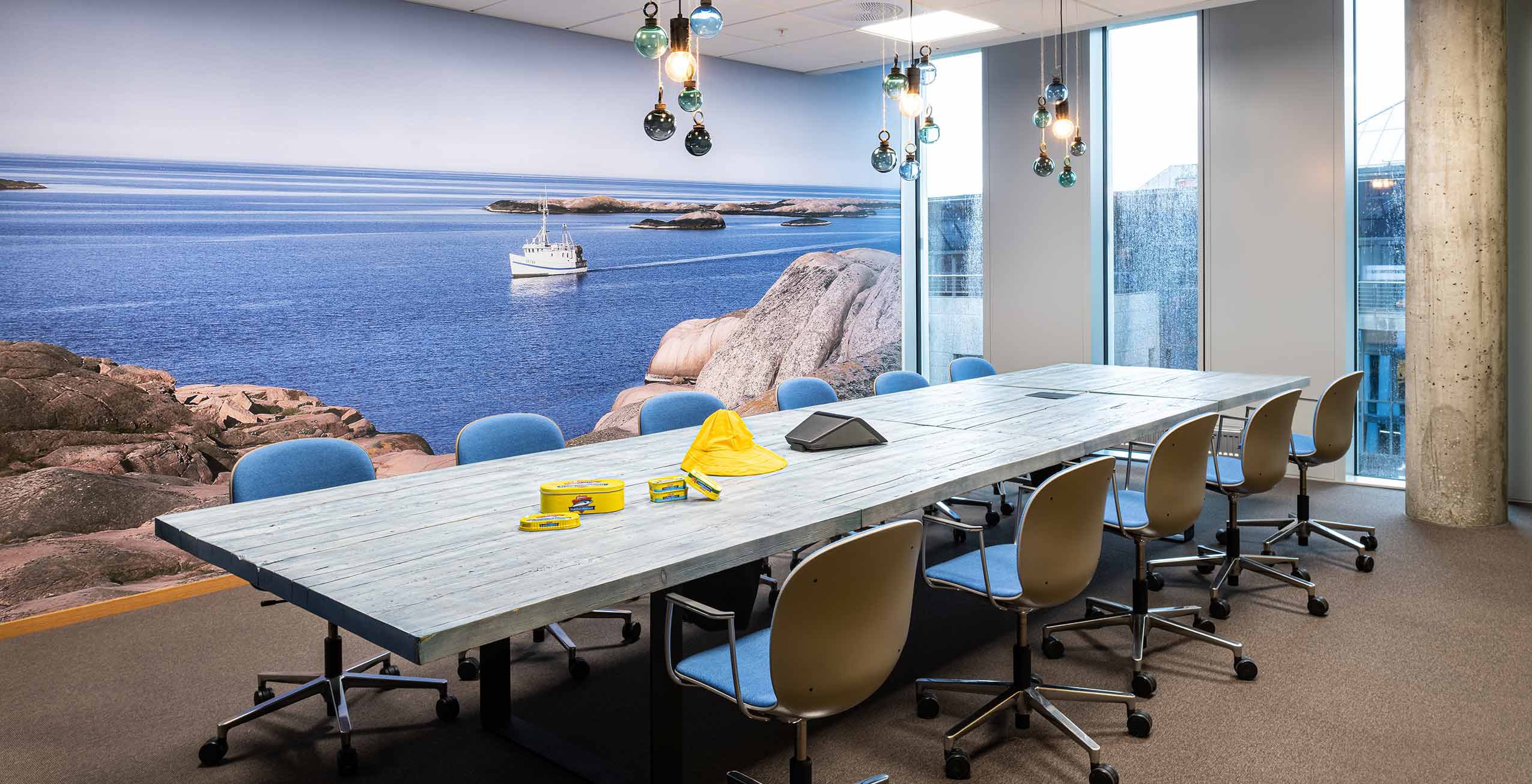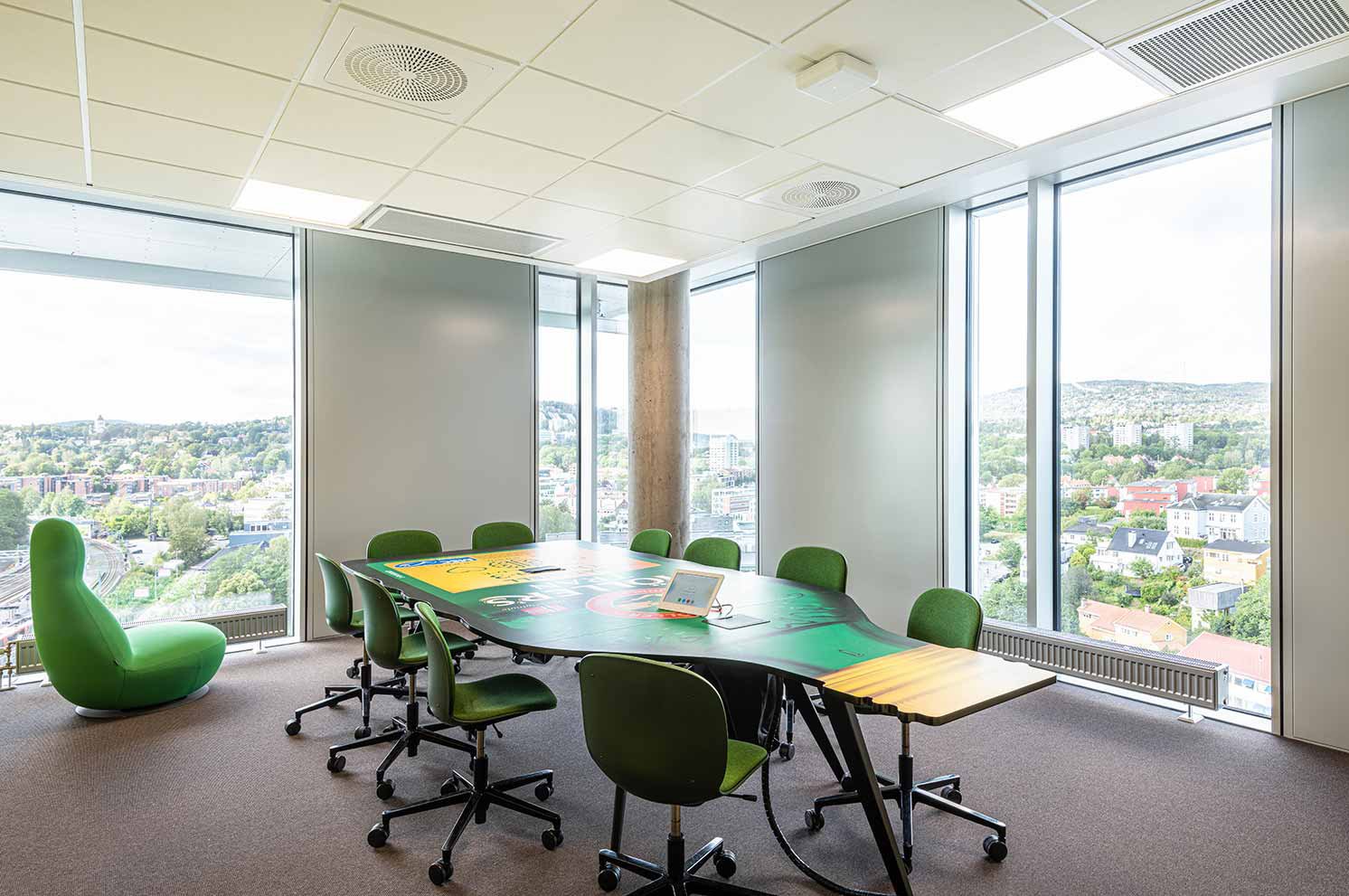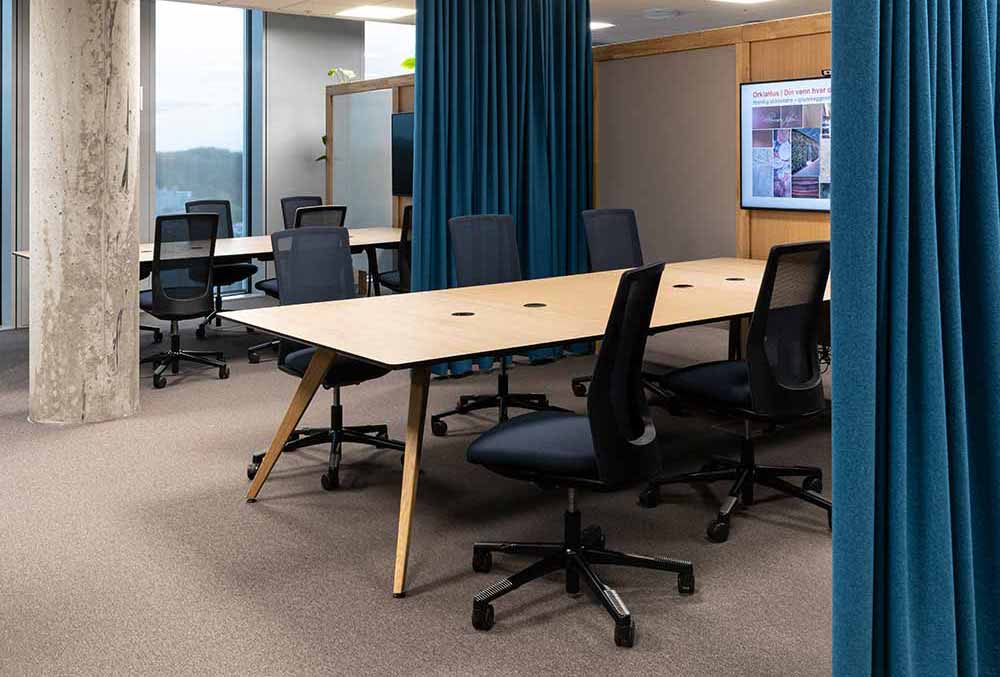Incorporating a holistic design, the new workspace also embraces activity based working, offering employees a modern and versatile environment aimed at improving productivity and wellbeing.
Located in Oslo, Orkla’s new 16-storey headquarters is home to more than 900 employees, and is the main base of operations for the biggest branded consumer goods company in the entire Nordic region, a state-of-the-art structure designed by NSW Architects and interior architects IARK.
Offering an open atmosphere and ground floor commercial space featuring pop-up stores and restaurants, the concept was to create a miniature city, where tenants have everything they need under one roof, with a focus on sustainable, modern living.
Working alongside contractors Skanska, in close collaboration with Orkla themselves, the ambition was to implement a design achieving high levels of sustainability. Early on, they targeted achieving BREEAM certification, an award measuring sustainable value in a series of categories, ranging from energy to ecology, resulting in a 5 star Excellent certification.
The building has several innovative energy measures, including a rooftop solar park providing power to the building, which runs completely on smart energy systems. Additional solar panels are built into balcony railings.
Recycled Furniture
Orkla were keen to reuse a variety of furniture from their previous office in keeping with their sustainability aims. A range of Flokk furniture, including HÅG H05, HÅG H09 and HÅG Capisco chairs were brought over from the previous office.
With a core mechanic built to last well past warranty, and a lack of glue making the chairs easy to disassemble, minor refurbishments and reupholstering was a simple task. Roughly 40% of the Flokk chairs in previous use were recycled to fit the new workspace.
With many Flokk designs utilising recycled and recyclable materials, as well as our overall sustainable design process, the interior architects also specified many additional Flokk chairs and tables throughout the rest of the project.
Activity Based Working
Orkla were keen to implement ABW (Activity Based Working) from an early stage, but understood it had to be developed in accordance to their work processes. Interior architects IARK carried out a pilot project for 120 employees 3 years prior to completion, giving insight into what ideas would have the greatest impact.
The final concept consisted of 3 different function zones:
-
Single workplaces – Occupancy levels for 50% of the number of employees
-
Collaborative spaces - Occupancy levels for 65% of the number of employees
-
Common areas - Occupancy levels for approximately 40% of the number of employees
Read More - The benefits of agile working environments
The learnings from the pilot scheme enabled the designers to set each zone’s occupancy level to the requirements of employees, thus ensuring that no work zone would be oversubscribed at any one time.
Reducing single workplaces to only 50% of the workforce size provides encouragement for employees to make use of the other zones when it suits their task, and increases movement and interactivity with other people and the environment. It also frees up space to include more space for common areas, which includes a range of rest and social areas.
With 2.1 chairs available in the workspace per employee, Flokk designs feature throughout, with Orkla’s physiotherapist deeply involved in the selection process to ensure employees had healthy and reliable furniture.
Individual work zones feature the HÅG SoFi as the standard work chair, with the HÅG Capisco specified in smaller numbers as an alternative design for employees. The intuitive and flexible nature of the chairs meant they were the natural choice.
In collaboration zones, the HÅG Futu was the standard chair of choice, with the colour of the undercarriage and design giving it warmth as well as function. RBM Noor, with its depth of styles and colours, was an exciting choice in brand meeting rooms. Although each meeting room has a distinct feel, the RBM Noor is adaptable to them all.
Offecct furniture was perfectly suited to a range of the common spaces. Offecct On Point tables, Offecct Meet sofa systems, and Offecct Move On stools can be found in the cafeteria, casual meeting areas and reception space.
The entire project was designed to align with the core philosophy of the brand.
“Orkla's values, to be courageous, trusted and inspiring, have been a guiding principle in how we design, and are expressed in everything from workplace concepts and design expressions, including the selection of decor, materials, colours and furniture” said Elisabeth Paus, Interior Architect Partner at IARK, continuing “Flokk chairs fit perfectly across many of the workspace zones” “HÅG SoFi is intuitive and easy to adjust, RBM Noor with its multitude of colours was an exciting choice in meeting rooms, and HÅG Capisco is a special chair.”






